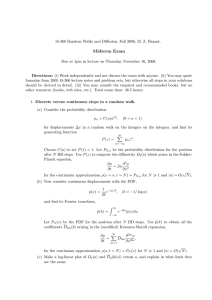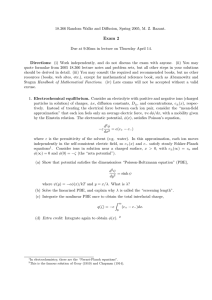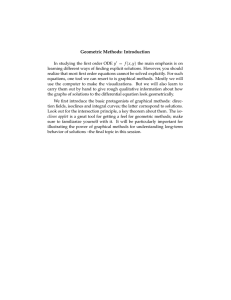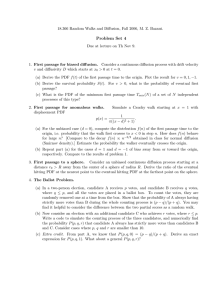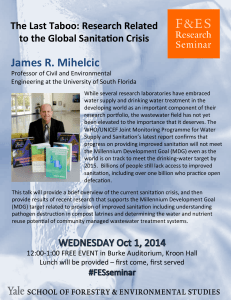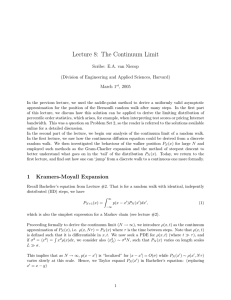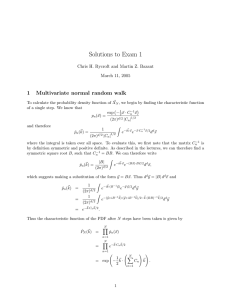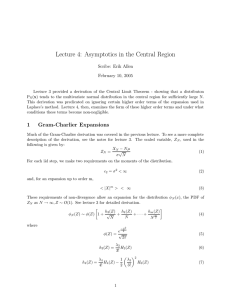3.185 Test 1 Overview Diffusion and Heat Conduction Friday October 3, 2003
advertisement
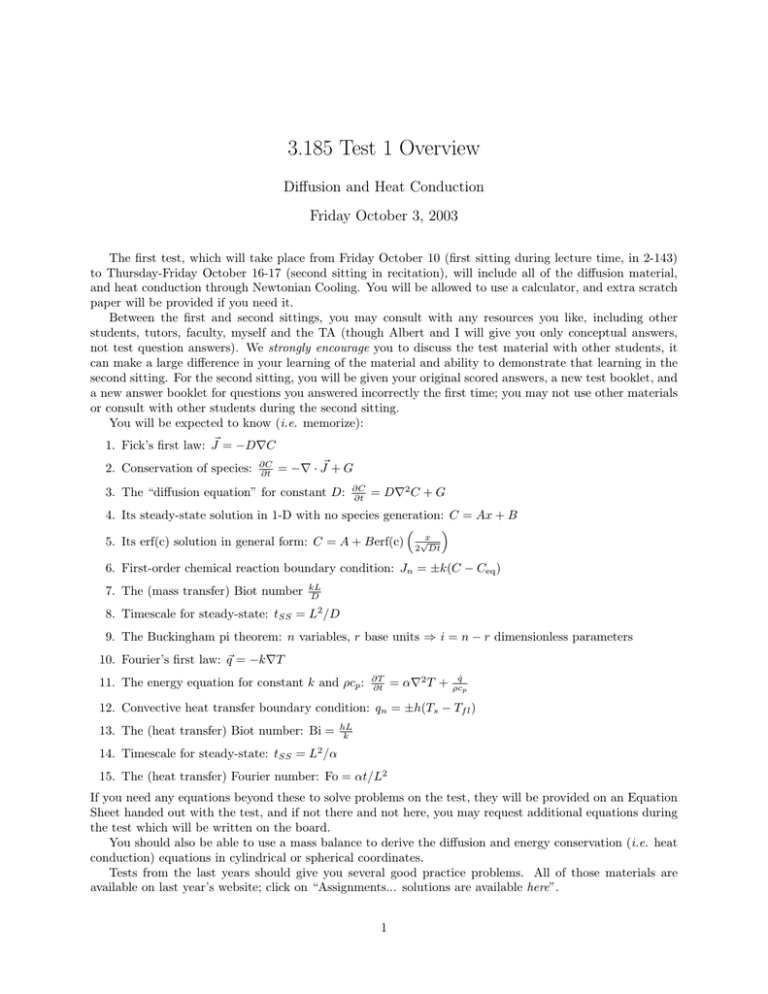
3.185 Test 1 Overview Diffusion and Heat Conduction Friday October 3, 2003 The first test, which will take place from Friday October 10 (first sitting during lecture time, in 2­143) to Thursday­Friday October 16­17 (second sitting in recitation), will include all of the diffusion material, and heat conduction through Newtonian Cooling. You will be allowed to use a calculator, and extra scratch paper will be provided if you need it. Between the first and second sittings, you may consult with any resources you like, including other students, tutors, faculty, myself and the TA (though Albert and I will give you only conceptual answers, not test question answers). We strongly encourage you to discuss the test material with other students, it can make a large difference in your learning of the material and ability to demonstrate that learning in the second sitting. For the second sitting, you will be given your original scored answers, a new test booklet, and a new answer booklet for questions you answered incorrectly the first time; you may not use other materials or consult with other students during the second sitting. You will be expected to know (i.e. memorize): 1. Fick’s first law: J� = −D�C 2. Conservation of species: ∂C ∂t = −� · J� + G 3. The “diffusion equation” for constant D: ∂C ∂t = D�2 C + G 4. Its steady­state solution in 1­D with no species generation: C = Ax + B � � 5. Its erf(c) solution in general form: C = A + Berf(c) 2√xDt 6. First­order chemical reaction boundary condition: Jn = ±k(C − Ceq ) 7. The (mass transfer) Biot number kL D 8. Timescale for steady­state: tSS = L2 /D 9. The Buckingham pi theorem: n variables, r base units ⇒ i = n − r dimensionless parameters 10. Fourier’s first law: �q = −k�T 11. The energy equation for constant k and ρcp : ∂T ∂t = α�2 T + q̇ ρcp 12. Convective heat transfer boundary condition: qn = ±h(Ts − Tf l ) 13. The (heat transfer) Biot number: Bi = hL k 14. Timescale for steady­state: tSS = L2 /α 15. The (heat transfer) Fourier number: Fo = αt/L2 If you need any equations beyond these to solve problems on the test, they will be provided on an Equation Sheet handed out with the test, and if not there and not here, you may request additional equations during the test which will be written on the board. You should also be able to use a mass balance to derive the diffusion and energy conservation (i.e. heat conduction) equations in cylindrical or spherical coordinates. Tests from the last years should give you several good practice problems. All of those materials are available on last year’s website; click on “Assignments... solutions are available here”. 1
